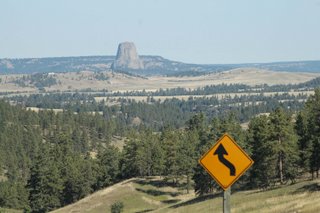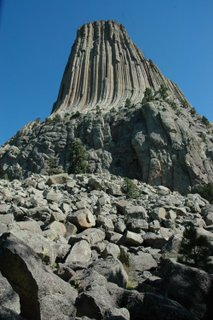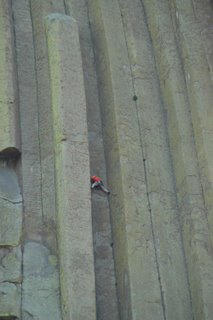
To 19th Century artist and explorer Thomas Moran, Devil’s Tower was “a grand and imposing sight, and one of the most remarkable physical features of the country.’’ To Native Americans, this 600-foot natural obelisk was a sacred site, “vital to the health of our nation and tow our self-determination as a Tribe,’’ according to Romanus Bear Stops, a Cheyenne River Sioux. To the makers of Close Encounters of a Third Kind, Devil’s Tower was a natural for an alien landing pad.
It is surely otherworldly, a strange and almost mystical apparition on a long horizon. For me, what was most remarkable was the vertical stippling – sometimes a dozen feet wide – that rises more than 1,200 feet above the Belle Fourche River, first on a hillock and then on granite boulders, and finally in sheer rock.
It was the river that carved this granite monolithe, wearing about the softer sand and limestone of seabed deposits over the past 50 million years.
In 1906, President Theodore Roosevelt named this the first U.S. National Monument. The sheer verticality of it, and its height, make it indescribable.
And apparently irresistible to climbers. Several groups were freelclimbing up its walls today – an image so astounding that visitors kept stopping and ogling, and wondering how anyone gets the nerve to play Spiderman without supernatural powers.
Another man was led by his wife, who read the markers along the way, and it seemed that he was blind. A reminder that there’s more than one way to see things, and that many of us have superpowers.
Wednesday, September 06, 2006
Devils Tower
Posted by
DARCOS CRUZ
at
6:35 AM
![]()
![]()
Subscribe to:
Post Comments (Atom)


No comments:
Post a Comment